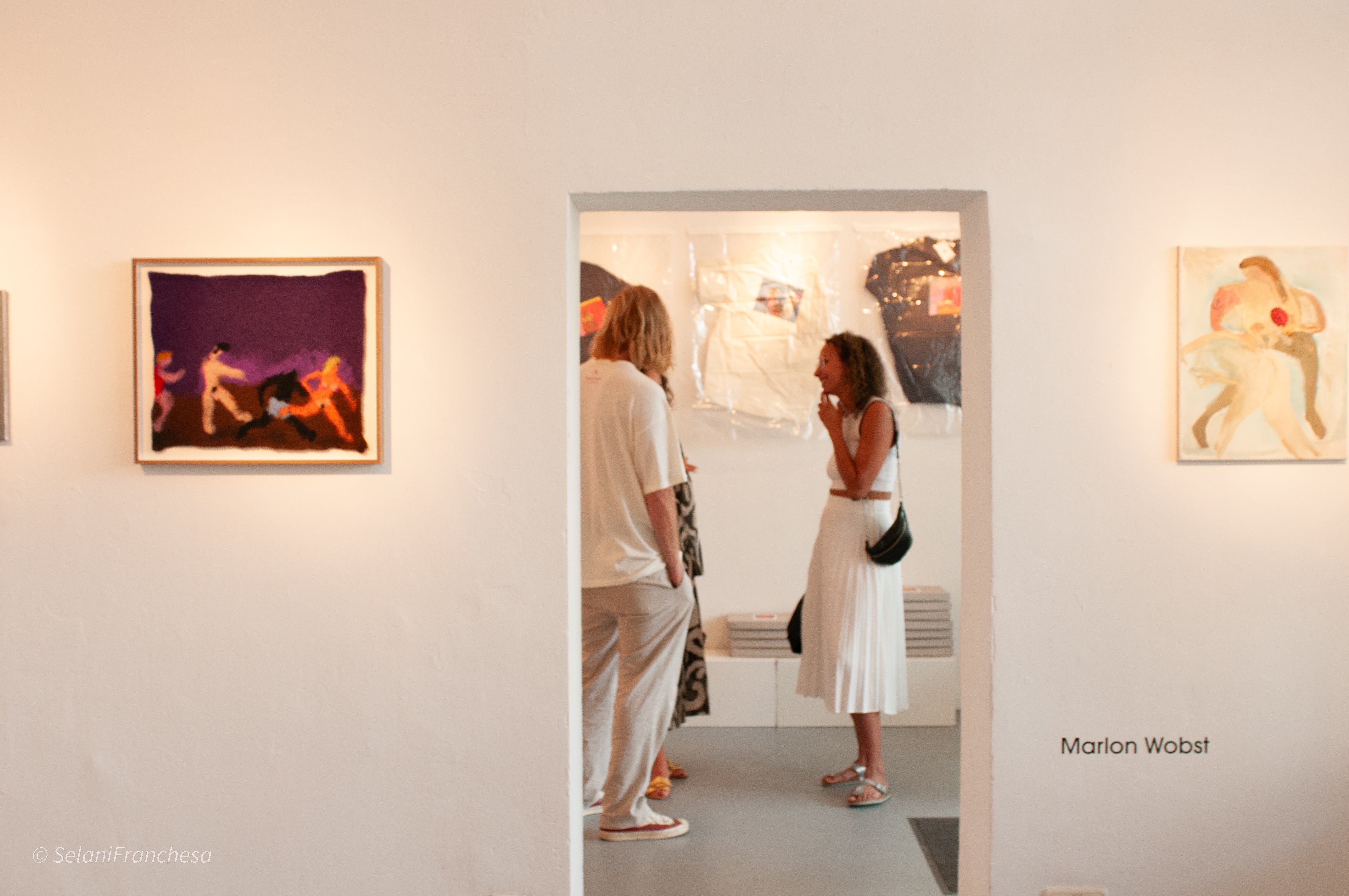During our summer Pop Up in Berlin, we teamed up with Marlon Wobst, who hails from the same hometown, Wiesbaden, Germany, as our Creative Directors. Marlon currently resides and works in Berlin, and over time, he evolved from a mere collaborator into a friend. Together, we embarked on the creation of an exclusive capsule collection featuring t-shirts and sweatshirts.
This event brought Marlon's distinctive felt pieces together with our SS23 collection in a series of gatherings held in Berlin's Mitte district. Marlon's art delves into the ubiquitous presence of the human figure and the intricate interplay between matter and presence.
Marlon Wobst's works enjoy international recognition, with exhibitions in renowned galleries and institutions. He is proudly represented by Schwarz Contemporary in Berlin and Galerie Maria Lund in Paris.
Walk us through your daily ritual when you get to the studio?
First I have to open the windows to minimize the oil paint smell, then getting dressed, then it’s all about coffee and looking at the works I previously started. After a while, I would start to paint or felt until lunch.
How is your studio space different from your home space?
I have the most beautiful flat with my wife and two daughters on the highest floor of a building from 1865 in the heart of Kreuzberg. Our view is a busy and popular square with trees and lots of bars, a little loud on the weekends, but lovely. My studio isn’t far, but less busy. It's very good to focus on the work. My view there is the next house, a lot of windows, and a dead backyard in between. I do get a lot of inspiration on my way from here to there.

Your work varies and evolves using each artistic medium. What does your process look like from start to finish? Does it vary using artistic tools?
Depending on what I am working on, my process isn’t always the same. When I paint, most things happen while painting, so usually I don’t have a clear picture of what will be depicted. Often I would just choose a certain color or color combination to start with. When I am working with clay, I start quite similarly, but without the colors. I have the clay and start to form body parts, or maybe a wall, or another kind of stage for something to happen and look where it drags me. The colors, in that case the glaze, will be added in a second round, the ceramics have to be fired first, and a second time after the glaze was added.. Working with sheep wool is a little different, since I have to have at least some kind of idea what should be visible in the end. So I think of what the work could become, then I place the wool, and the last part is to felt it together without destroying it.
Your work plays with the use of ‘perspective’, tell us how this concept plays an important role in your creative process?
I try to keep it simple with perspectives. I don’t want to have a stressful painting which tries to make me look into a certain vanishing point, I’m not into illusions on the canvas. I enjoy playing with composition in just letting the different ‘actors’ (which can be depicted people, but also trees, clouds or just color fields) loose on the canvas or in the felt, steering the view on the painting.
Talk about your artwork in relation to colour?
I used to paint really muddy, greyish - greenish - brownish with carefully added colorful highlights, but the works get brighter thanks to the felting. The sheep wool comes in various beautiful and bright colors and is hard to mix, so I am forced to use them as they are and this has a certain impact on my paintings, where for example pink skies, purple fields and white seas appear all of a sudden.

What has caught your eye recently? Any points of inspiration or references.
Together with my older daughter Rosa (she turns 8 soon), I visited a very famous festival outside of Berlin called Fusion, but it wasn’t on yet. It takes place on a former airfield and is huge. There are numerous stages and bars and little houses and hideabouts and so on, all still not perfectly in shape since they work on them for weeks before the festival opens. We were allowed to roam through this area, often all by ourselves, and could enjoy these Mad Max - like landscape with its wooden treehouses and domes and cages, lots of very old cars which are decorated in the most hilarious way and used by the workers to move things and manpower around the area. That gave me some impressions.
Your wife is an artist too! How do love and art coincide in your life?
In a very beautiful and satisfying way. We talk about our work very openly and ask each other for advice a lot.
How has living in a creative city like Berlin shaped your work?
My way to work every morning is already a big source of content for my works. I like to depict less important things or situations. I don’t want to paint war scenes or saints in heaven, I’m happy with someone losing his hat because of a strong wind or just a group of people chatting. But in general, I am very thankful to live amidst such a huge amount of humans because they are the true motivation for what I am doing.



